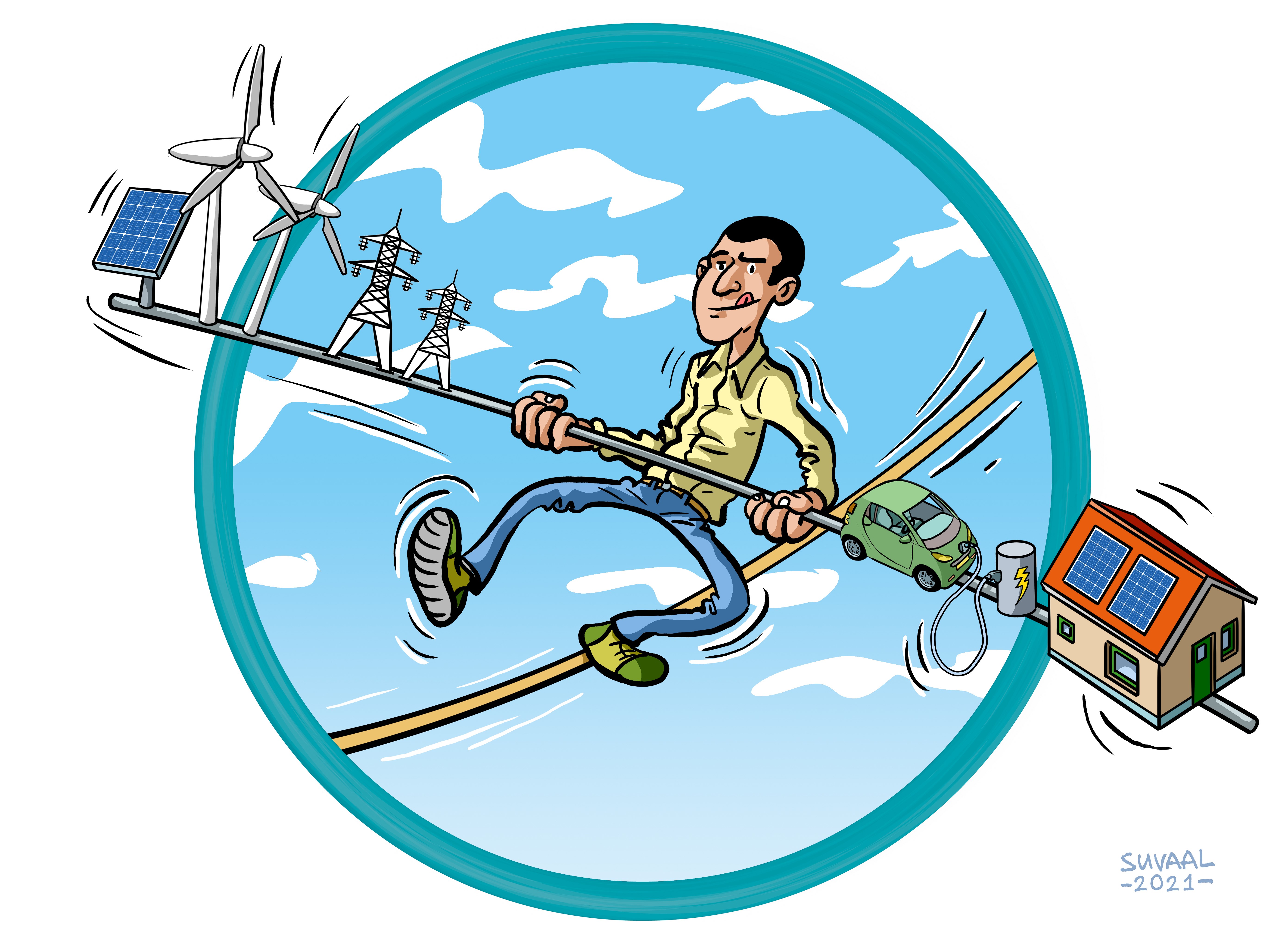MIGRATE - Massive InteGRATion of Power Electronic Devices
Research Themes: Energy, Software technology & intelligent systems


A TRL is a measure to indicate the matureness of a developing technology. When an innovative idea is discovered it is often not directly suitable for application. Usually such novel idea is subjected to further experimentation, testing and prototyping before it can be implemented. The image below shows how to read TRL’s to categorise the innovative ideas.
Summary of the project
The way our electrical grid operates is a continuous balancing act - what is generated must be balanced with what is needed at any instant. This balancing act is currently done by transmission system operators. Fluctuating renewable energy causes power flow variations in the grid and imbalances between consumption and production of electricity. In a conventional electric system, the energy contained in generators and motors at power stations and industrial facilities provide inertia as they rotate synchronously to the electricity grid. This effectively acts as a buffer against rapid changes. Having a lot of rotating mass on the grid acts like a shock absorber and slows the rate of power variations. Modern renewable generators are connected to the grid through a power electronic converter. In a conventional electric system, the consequence is that inertia from a renewable generator is not transferred to the grid. In systems with zero or low inertia, power failures in the grid, such as a short circuits, cause fast and large dynamic phenomena. The longer it takes to respond to these instabilities, the more energy is required to restore the system to its stable state. In traditional electric systems the stable state is reflected by the frequency. In zero inertia systems, it is very difficult to keep the frequency within its normal range of variation. In the absence of inertia conventional control and protection equipment cannot work properly anymore, and therefore the grid stability is at risk. The researcher is working on developing new control principles for our electrical grid on a system level.
What's next?
MIGRATE was mainly focused on onshore generation systems so a next step would be to look at the generation and control of offshore renewable systems. Another next step will be looking into new principles of control of the grid when you connect huge capacity electrolysers to the grid or what type of control is needed when different consumers and devices can provide support to stabilize the grid.
Contribution to the Energy transition?
Our current electrical grid is very inert due to the decoupling of renewable power plants. The researcher works on new fundamental operational and control principles for complex, unpredictable, and inherently instable future offshore-onshore energy systems dominated by renewable energy sources.
Dr. Jose Luis Rueda Torres
Faculties involved
- EEMCS
